Walking through Rome and suddenly stepping onto Piazza della Rotonda to see the Pantheon in all its ancient glory is an unforgettable experience. First, you will note the domed ceiling, then the columns, and near the top of the Pantheon you will see some old writing. There is some complex history around the Latin words on the monument but they are simple to translate. The inscription on the Pantheon says “Marcus Agrippa, the son of Lucius, three times consul, built this.”
Latin on the Pantheon
In Latin, the writing on the Pantheon says “M.AGRIPPA.L.F.COS.TERTIUM.FECIT.”
The Latin is succinct but it translates to mean that Marcus Agrippa, son of Lucius, built this when he was consul for the third time. (Consuls were the chief diplomats in Rome – comparable to a Prime Minister or a President).

The inscription on the Pantheon is true because Marcus Agrippa DID build the first Pantheon. However, he did NOT build the Pantheon as we know it now. The first building here was commissioned by Marcus Agrippa in or around 27 AD. The temple was dedicated to the victory of the emperor Augustus over Antony and Cleopatra. Augustus was Marcus Agrippa’s father-in-law.
This original building was completely destroyed by a fire. Domitian restored the Pantheon in 80 AD, but ut was struck by lightning in 110 AD and burned to the ground once more. The building was dedicated to the gods (pan being the Greek word for “all” and theon meaning “gods), but the back-to-back destruction of the temple suggested that the gods were NOT happy with it.
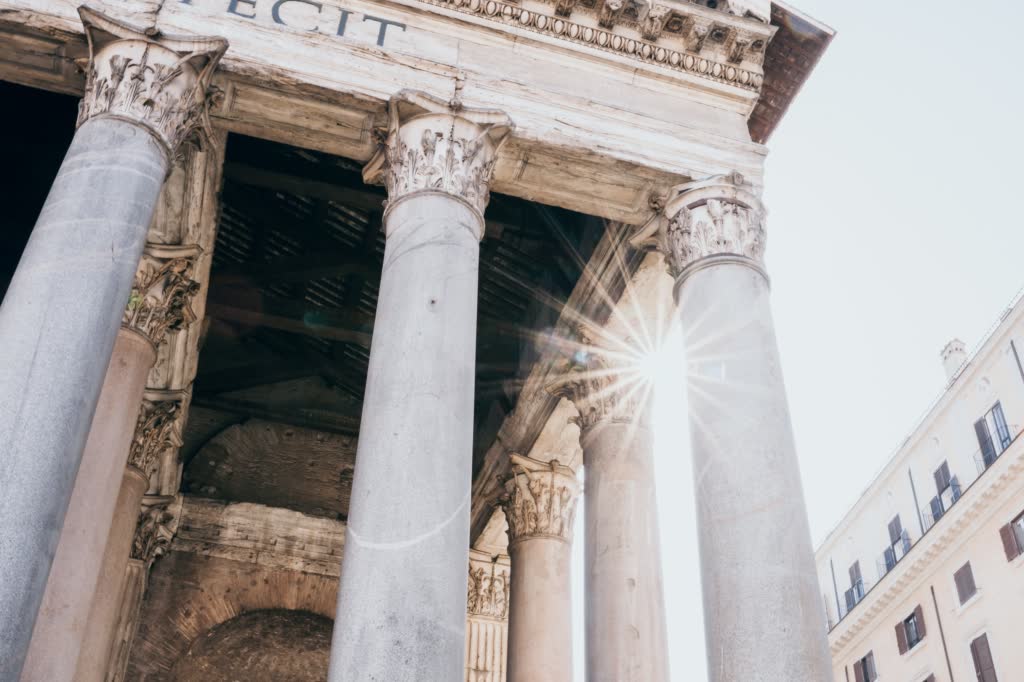
The Emperor Really Behind the Pantheon Inscription
It wasn’t until Hadrian became emperor that the Patheon was completely redesigned and rebuilt. A great lover of Greek influences, Hadrian likely wanted to recreate the building to honor the emperor Augustus – for whom the first Pantheon was built.
Historians aren’t sure why Hadrian put Agrippa’s name back on the facade of the building. He may have added the inscription to the Pantheon as a sign of humility. On the other hand, it could simply be there to reinforce the connection between the building and the emperor Augustus.
In any case, the Latin writing confused academics for years because it didn’t seem like a building Agrippa could have made himself. However, the inscription adds to the ancient allure of the Pantheon – and now you know exactly what it means.
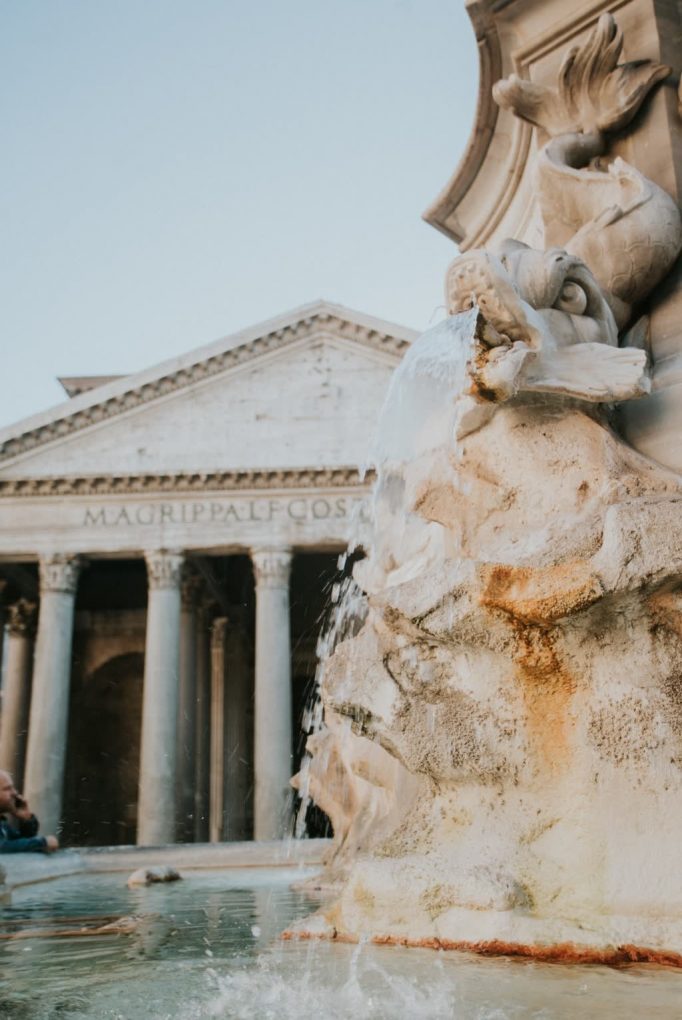

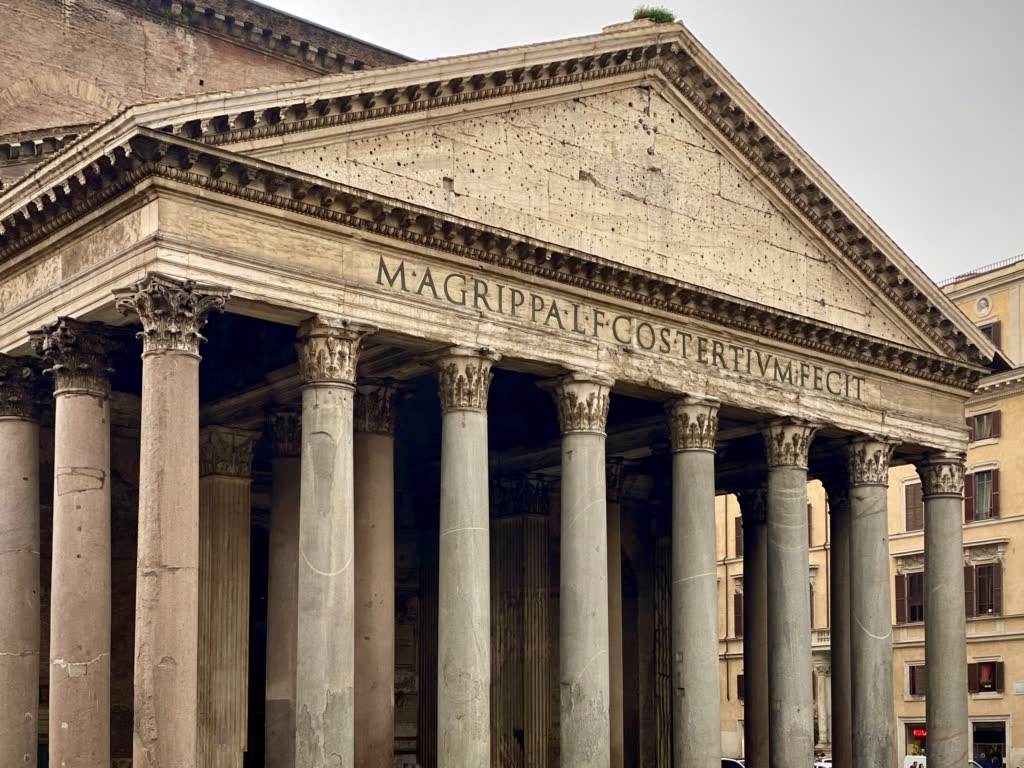


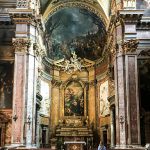
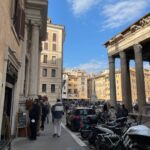
Dear Natalie, I applaud your efforts with this blog, and your credo of coffee and wine … (a little less gelati for me). May the sun always shine on you in Rome.
Thank you, Madam ! Pantheon Pride of Rome !
“Simple, erect, severe, austere, sublime
Shrine of all saints and temple of all Gods,
From Jove to Jesus—spared and blest by Time
Looking tranquillity, while falls or nods
Arch—empire—each thing round thee—and Man plods
His way through thorns to ashes—glorious Dome!
Shalt thou not last? Time’s scythe and Tyrants’ rods
Shiver upon thee—sanctuary and home
Of Art and Piety—Pantheon!—pride of Rome!
Relic of nobler days, and noblest arts!
Despoiled yet perfect! with thy circle spreads
A holiness appealing to all hearts;
To Art a model—and to him who treads
Rome for the sake of ages. Glory sheds
Her light through thy sole aperture; to those
Who worship, here are altars for their beads
And they who feel for Genius may repose
Their eyes on honoured forms, whose busts around them close.”
I’ve looked through some drone videos on YouTube regarding the Pantheon, and it is amazing how this jewel stands amongst the later, ordinary buildings that surround it! Can you imagine waking up in the morning, looking across the way, and seeing the Pantheon?!
Very interesting!